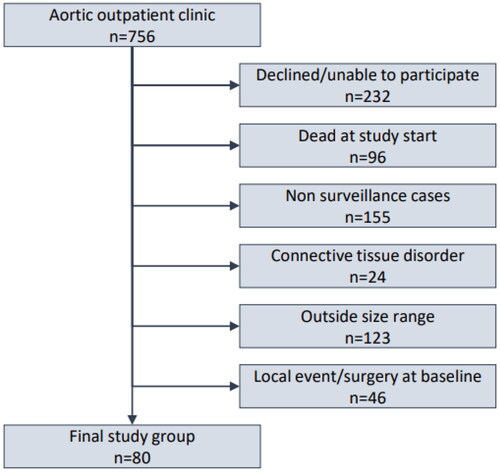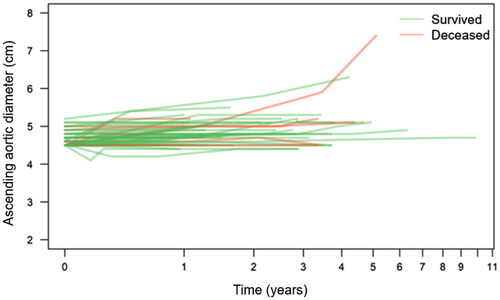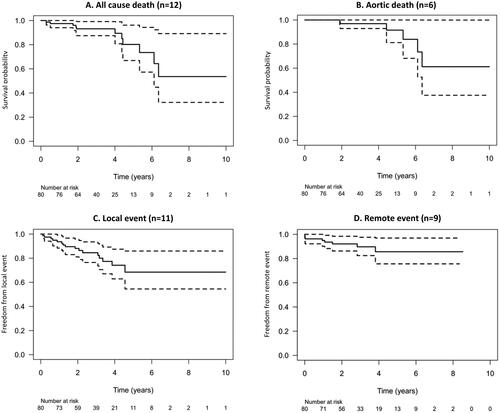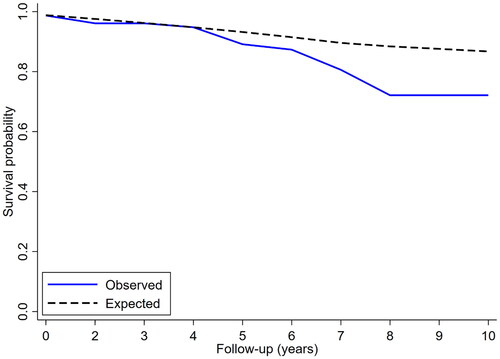Figures & data
Figure 1. Flowchart of the selection process identifying the final study group (n = 80) by applying exclusion criteria to the initially eligible patients, referred to an aortic outpatient clinic (n = 756).

Figure 2. Diagram (“spaghetti plot”) of proximal aortic diameter (y-axis) development over time (x-axis) in each patient (individual measure points not shown). Patients dying during the study period highlighted in red. Note logarithmic scale on x-axis.

Table 1. Clinical characteristics of 80 patients with moderately (45–54 mm) proximal thoracic aorta.
Figure 3. Kaplan-Meier survival curves (with 95% confidence interval) for (panel A) freedom from all-cause death; (panel B) freedom from aortic death; (panel C) freedom from local (proximal aorta) event; (panel D) freedom from remote (distal aorta) event. Of local events, n = 11 (100%) were elective surgical repair. Of distal events, n = 6 (66%) were acute type B dissections.

Figure 4. Relative survival (observed versus expected) for patients with proximal aortic dilatation (solid line) versus age-, sex- and time period-matched normal population (cross-hatched line). At ten years of follow-up, relative survival was 82%.

Table 2. Deaths (n = 12) in 80 patients with moderately (45–54 mm) dilated proximal thoracic aorta, including aortic diameters at baseline and pre-event for both proximal and descending (i.e. affected) aortic segments.
Table 3. Local events: prophylactic surgical procedures (n = 11) on the proximal thoracic aorta.
Table 4. Remote events (n = 9): type of primary event, associated procedure (if any), and diameters of proximal and affected aortic segments at baseline and pre-event.
Supplemental Material
Download MS Word (26.4 KB)Data availability statement
The data underlying this article will be shared on a reasonable request to the corresponding author.
